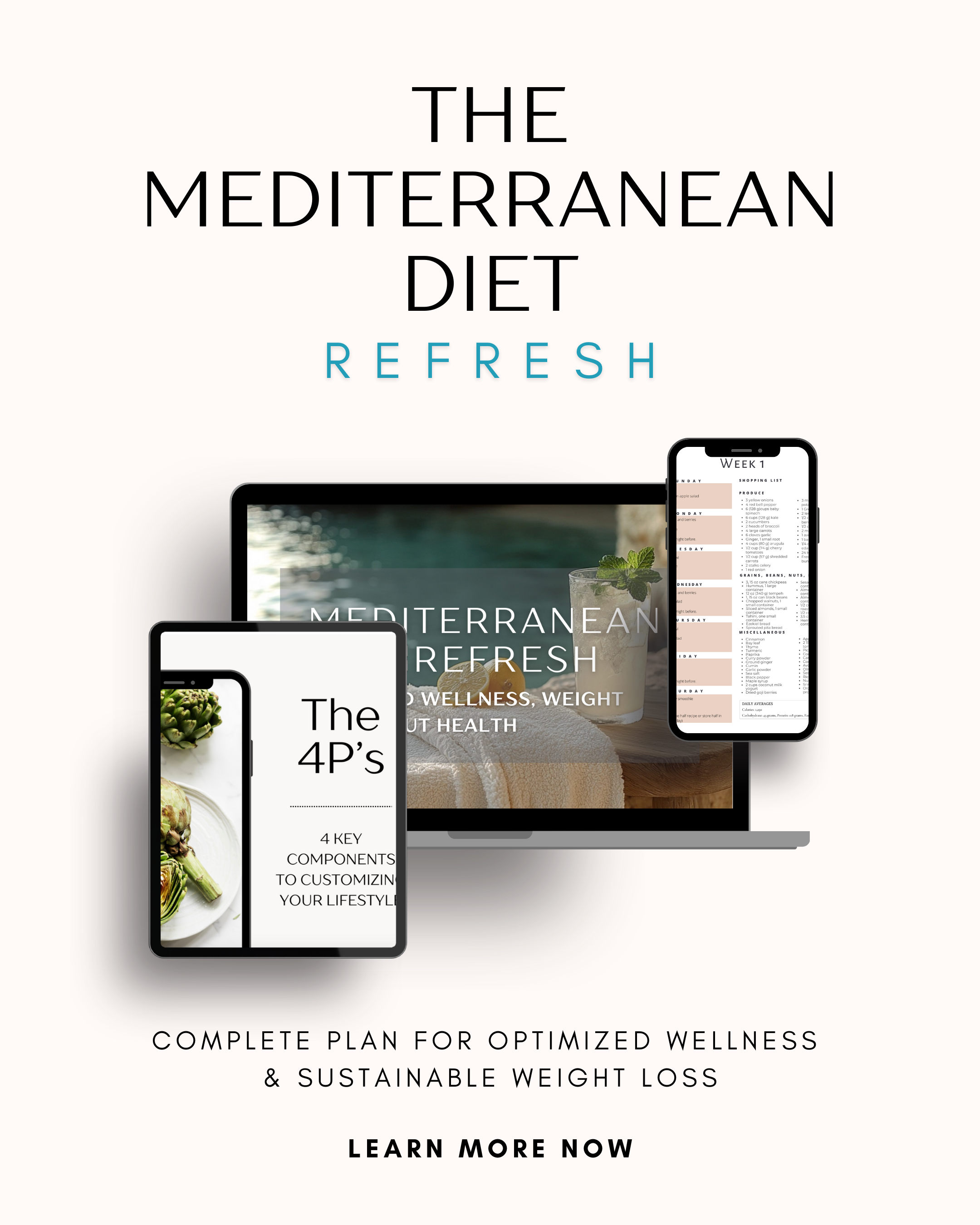6 Foods For Gut Health
/Why Gut Health Matters
Your gut is often called your second brain — and for good reason. It plays a powerful role in digestion, mood regulation, immune function, and even energy levels. When your gut is balanced and thriving, you feel it: better digestion, steady energy, glowing skin, and a more stable mood.
But when your gut microbiome (the ecosystem of trillions of bacteria living in your digestive tract) becomes imbalanced, it can throw off your entire system — not just your digestion.
Signs You Might Need to Work on Your Gut Health
If you’re not feeling your best and can’t quite pinpoint why, your gut might be sending you signals. Common signs include:
Persistent bloating or gas
Irregular bowel movements (constipation or diarrhea)
Unexplained fatigue or low energy
Frequent sugar cravings
Brain fog or trouble concentrating
Skin issues such as acne, eczema, or dull complexion
Weakened immunity or getting sick often
Mood swings, anxiety, or irritability
Even one or two of these signs can indicate it’s time to focus on your gut health — but the good news is, you can begin supporting your microbiome with small, consistent steps, starting with the foods you eat.
Thorne highlights several standout foods that nourish your gut, promote balance, and support overall wellness. Let’s explore six of them below.
Excerpt from Stephen Phipps, ND, PhD | Thorne
Dark berries
Dark berries like blueberries, raspberries, and blackberries have two important constituents that benefit the GI tract – polyphenols (ellagic acid and anthocyanins, for example) and fiber. To receive the benefits of both, it's easiest to eat them. Like green tea, there is a complicated interaction between polyphenols, the microbiome, and the creation of bioactive compounds. Although the above berries exert positive effects on the microbiome, some, like raspberries, have additional benefits. Bugs in the gut microbiome exposed to ellagic acid and other polyphenols in raspberries synthesize the bioactive compound urolithin A, which supports healthy aging and muscle endurance.
There are endless ways to incorporate these foods into your diet – from smoothies and homemade popsicles for the summer (check out paletas recipes) to salads. Or just keep a bowl of them handy!
Chocolate
Chocolate is rich in polyphenols and, like the other big players on this list, it also serves up a heaping helping of healthy foods for the microbiome. And, like the other polyphenols discussed, chocolate polyphenols also have a complex relationship with the gut.
Chocolate is very versatile and can be used in smoothies, lattes, and of course, warmed up by itself. If you’re looking for something different to try, a mole (pronounced moh-lay) sauce might be right up your alley. It’s a spicy sauce used in Mexican foods that has numerous iterations, one of which includes chocolate. You can layer in some fun GI foods by creating a mole sauce for fish (preferably mahi-mahi or salmon); dust the fillet with tiger nut flour, pan sear it, and voilà! A perfect blend of resistant starch (more on this below), omega-3 fatty acids, and polyphenols. Need a side? Try fried green plantains, also known as tostones (fried green plantains – see below), or blueberry salsa.
As a disclaimer, this should not be viewed as a free pass to run out and buy a candy bar. It’s the cacao in chocolate that contains its health benefits, not the added sugar, milk, and other ingredients that make it taste yummy.
Green bananas/plantains
Green bananas and green plantains are other great clean-label options for resistant starches. They have some of the highest amounts of resistant starch in foods. But don’t let them ripen because the resistant starch will convert to regular starch.
How do you prepare them? You can buy these bananas in the form of flour in most places – making them suitable for sprinkling in smoothies. Or consider making a fun GI brownie with banana flour, tiger nut milk, and chocolate (limit the sugar of course). If you can get whole green plantains or green bananas in your area, then try making tostones (fried green plantains) or a fun Puerto Rican dish guineítos (savory green bananas) to mix it up a bit. In addition to benefitting your GI tract, green bananas have also been shown to support healthy weight and metabolism – an extra bonus!
Lentils
No GI food list can be complete without lentils. This legume has it all – insoluble fiber, soluble fiber, resistant starch, and even polyphenols. Lentils are inexpensive and easy to prepare, so a winner all around. This versatile food is linked to numerous health benefits, both inside and outside the GI tract. You can thank your microbiome again for making bioactive compounds from the polyphenol-rich content inside the lentil.
Need some meal ideas? An internet search for white fish and lentils provides numerous options if you eat fish. Vegan or vegetarian? No problem. Use tiger nut milk, mushrooms, and beluga lentils to create a savory stew. Lentils also pair well with squashes for some tasty curries.
Fermented foods
I know what you’re probably thinking, “Of course, fermented foods offer beneficial bacterial cultures – we’ve heard this already.” Although you are correct that fermented foods like yogurt or sauerkraut are good sources of beneficial bacteria, I’m not here to talk about old news. Rather, I’d like to introduce some unsung heroes that are also found in fermented foods – bacteriophages. These little sentinels feed on “bad bugs” that might try to get a foothold in the fermenting foods. And this is pretty much how they work in the GI tract. They target bad species and remove them from your GI’s ecosystem, leaving more room for the beneficial bugs to proliferate. So, in addition to providing probiotics, fermented foods act as prebiotics, too.
Fermented food options run the gamut from sweet to savory. Just make sure you choose something that’s not pickled with vinegar, because pickling stops good bacteria in their tracks. Cauliflower rice bibimbap with a good kimchi is a great option. You’ll also get added benefits for the gut if you use a well-made gochujang sauce.
Fish
Because I’ve talked about several foods that contain specialized starches or polyphenols, including fish in this discussion might seem out of place. But I want to add it to illustrate the growing list of potential prebiotic foods that don’t contain starches/fiber and polyphenols. Fish are important because they are rich in omega-3 fatty acids, which have been shown to behave as prebiotics by positively altering the microbiome. They also help balance the milieu within the GI tract through modifications directly to the immune system and by supporting a healthy inflammatory response.
Whatever type of fish or recipe you try, be sure not to overcook it.
Bringing It All Together
📌 Coach’s Notes: Gut health isn’t about perfection — it’s about consistency. You don’t have to overhaul your diet overnight. Instead, start by adding one or two gut-supportive foods each day. - Margot
Eat a variety: A diverse gut thrives on diverse foods.
Hydrate often: Water helps keep digestion smooth and supports nutrient absorption.
Slow down when eating: Digestion begins in the mouth — mindful eating helps your body process and absorb nutrients more efficiently.
Balance your plate: Pair gut-friendly foods with lean proteins, healthy fats, and fiber for optimal results.
Manage stress: Your gut and brain are closely connected — stress can directly impact digestion and microbiome balance.
Over time, these small daily actions build a stronger, healthier gut — one that supports your mood, energy, and long-term wellness.
Continue Exploring
Discover more with the resources below:
📌 Related Posts
5 Anti-Inflammatory Meals to Support Your Health and Wellness
5 Blood Sugar Management Hacks to Boost Energy and Balance Your Health
✓ Done-for-You Guides
50 Anti-Inflammatory Meals → done-for-you recipe bundle
Mediterranean Diet Refresh → fully guided program with meal plans, gut health, weight loss guidance and more
Say Hello to Gut Health with the Mediterranean Diet
Gut health is such an important piece of wellness that we wove in special gut health education into the Mediterranean Diet Refresh. With this program, you’ll enjoy:
9 week guided journey
Done for you meal plans
Over 200+ recipes
Gut health education & tools
Weight loss education
Progress tracking & more!
Get Started Today: The Mediterranean Diet Refresh






















